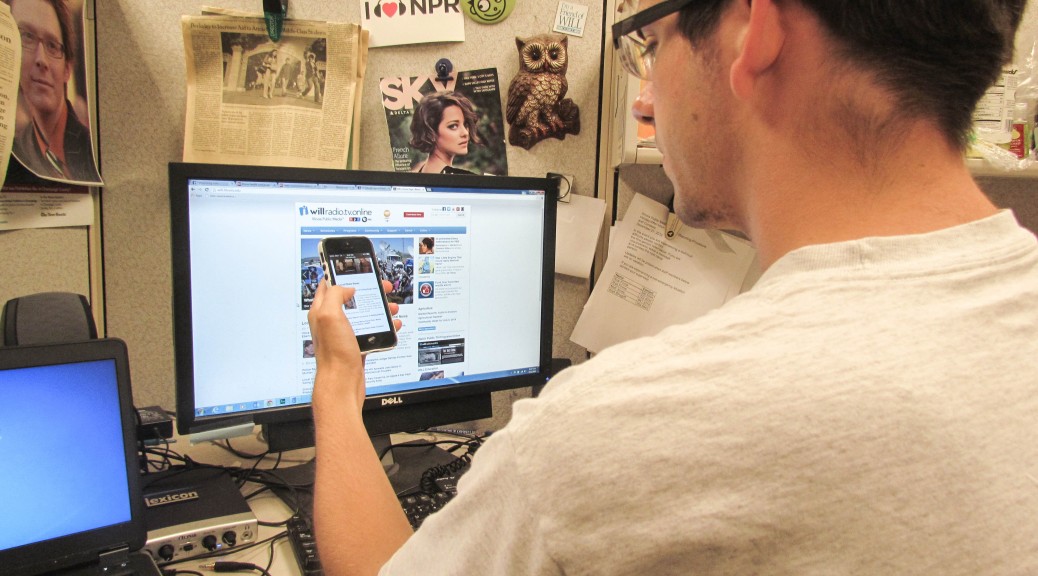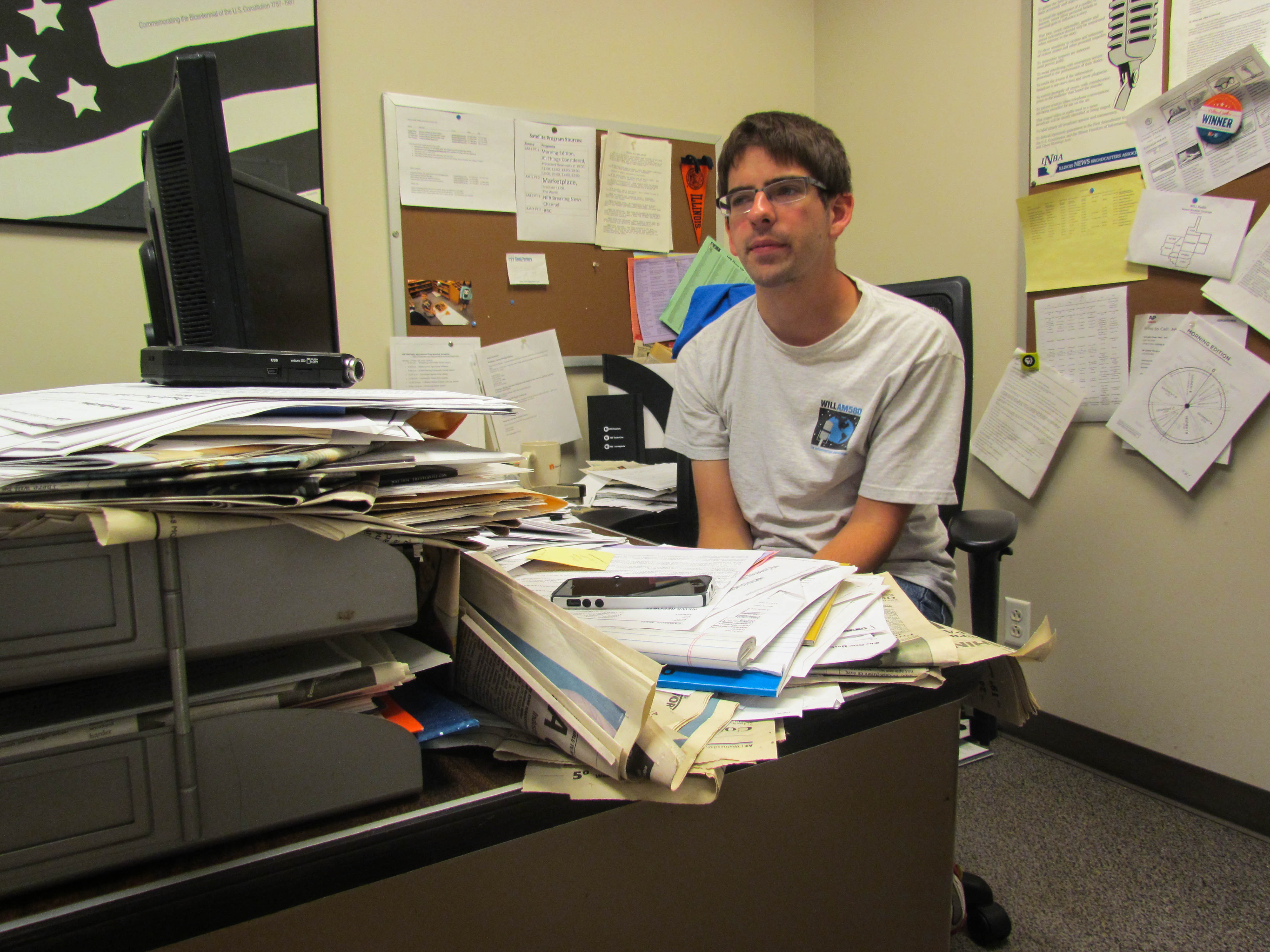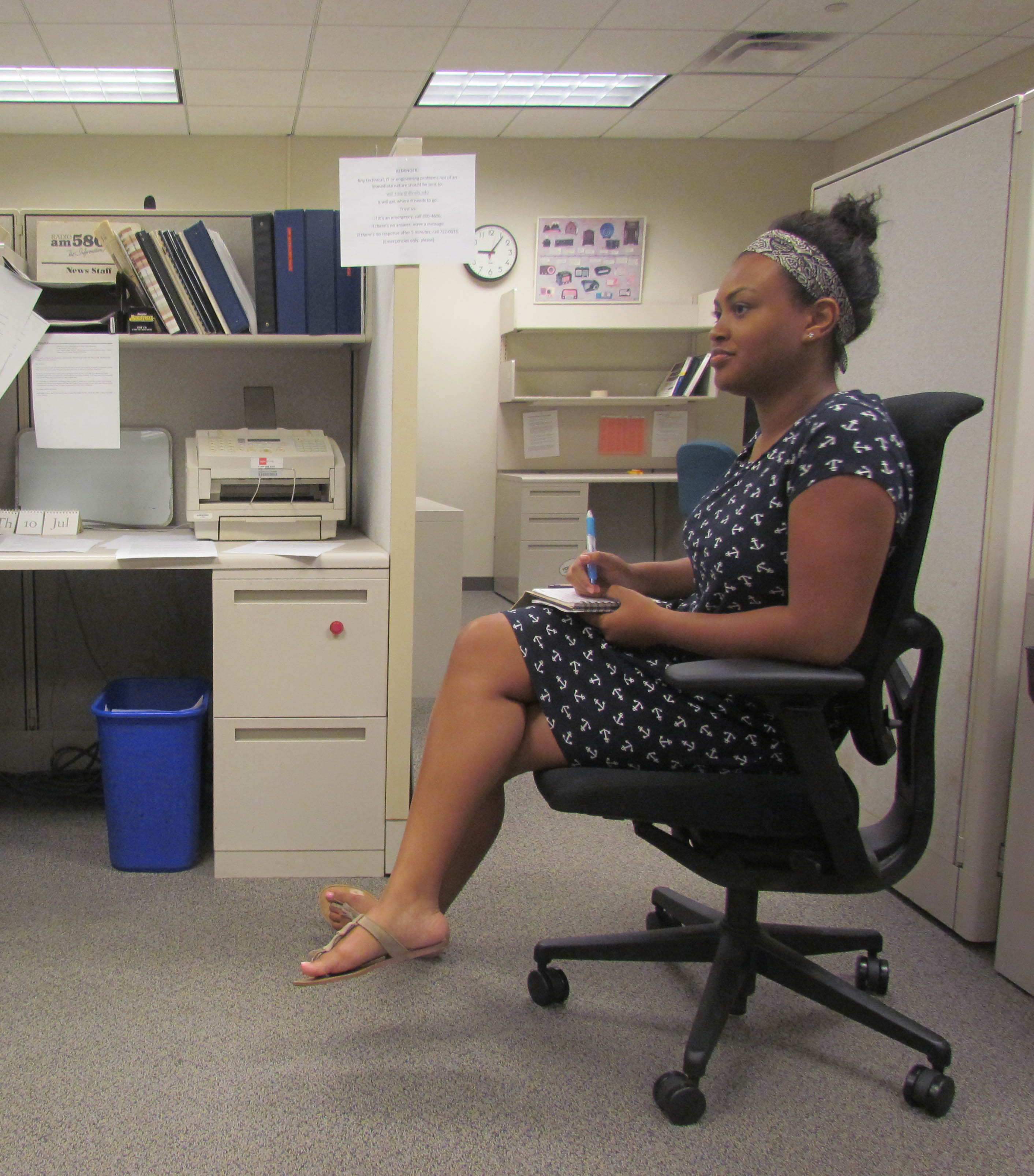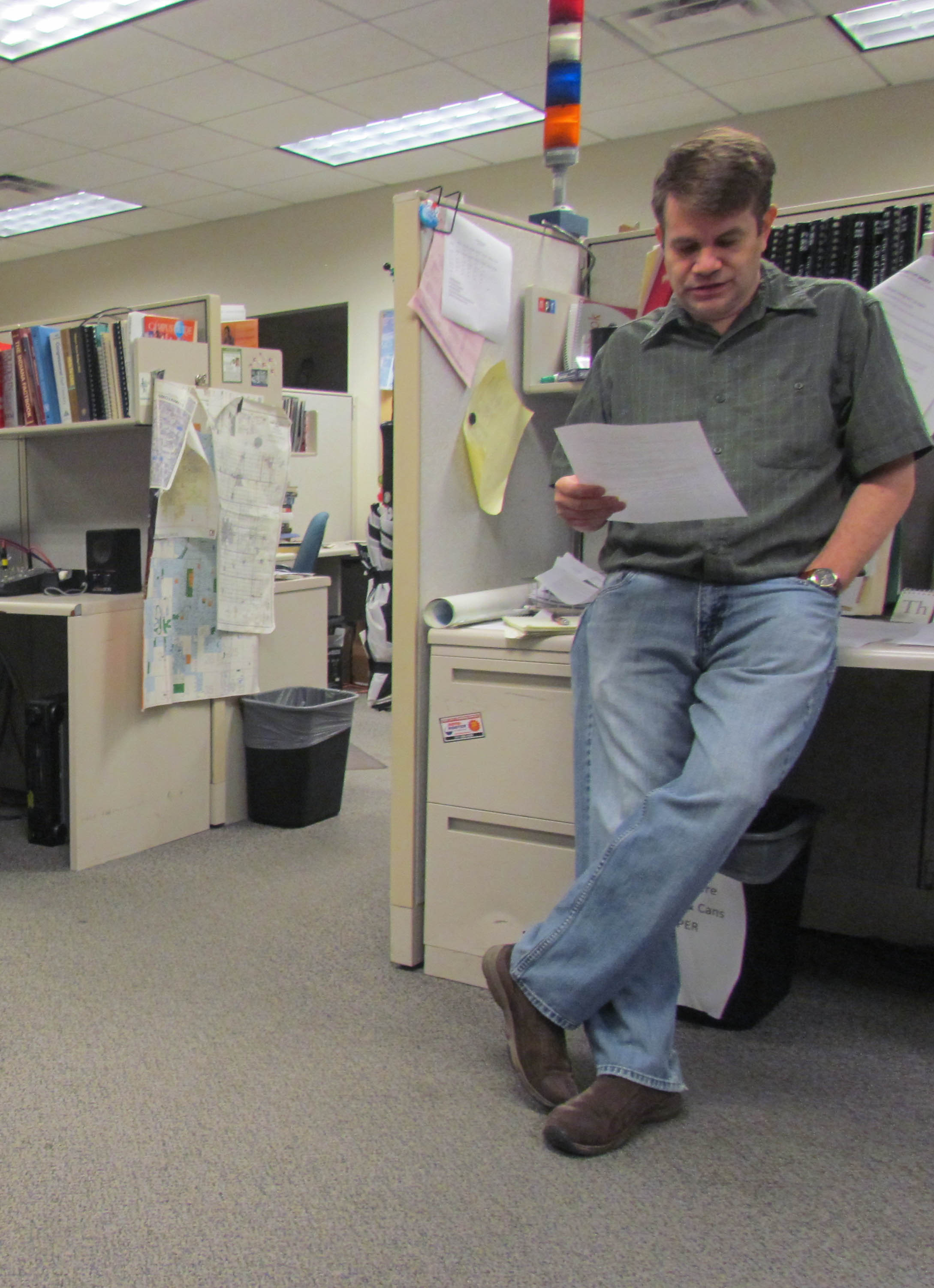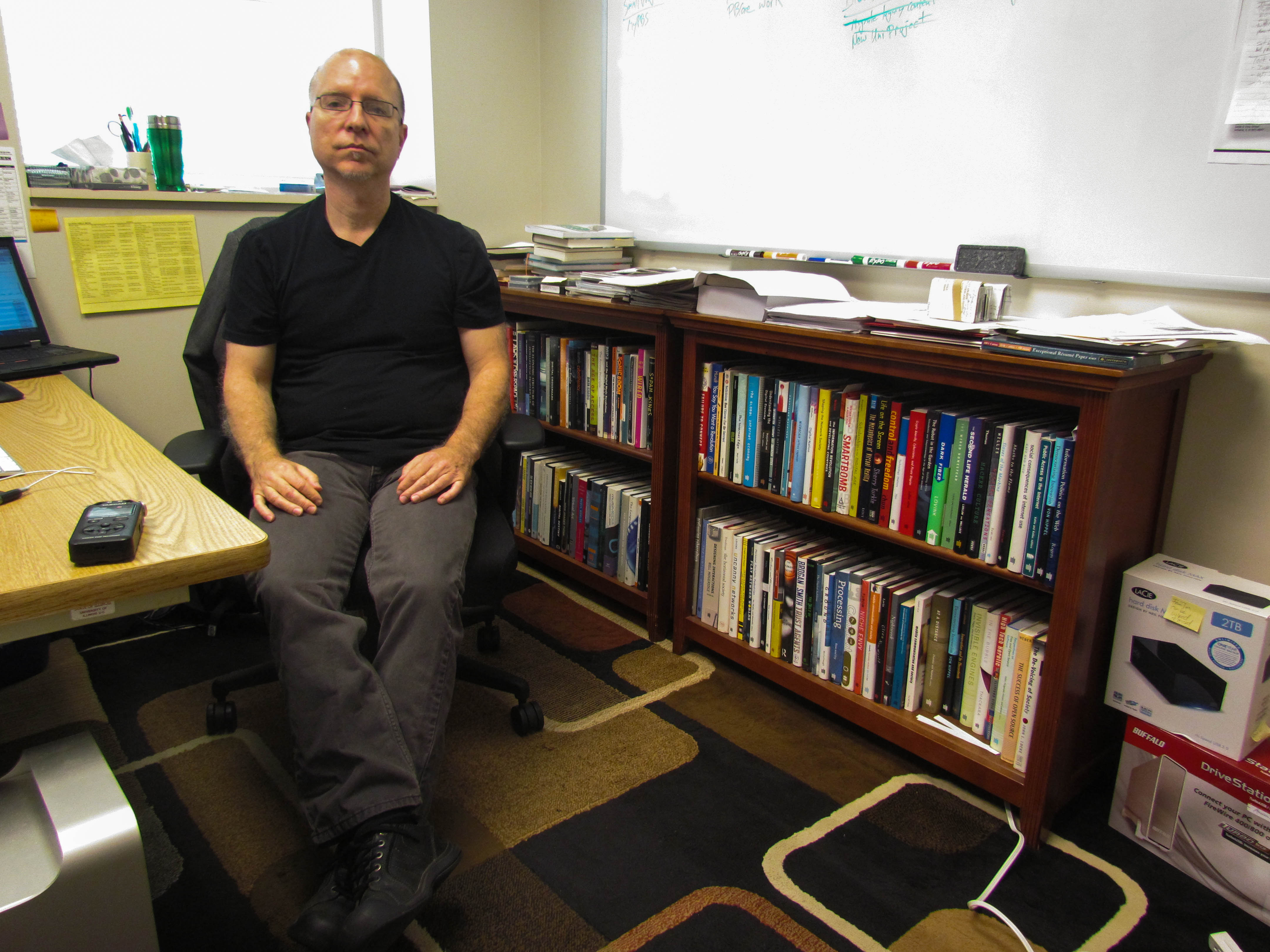“It’s good in the sense that it helps engage us and helps us get out to other communities in a much quicker and more efficient way…social media lets us be everywhere at once.”
-Sean Powers; WILL
Sean powers has been working at WILL for the past four years. A 2009 graduate of Mizzou’s journalism school, he came from a program that placed a heavy emphasis on new media and digital technologies in its curriculum. Yet when he began working at WILL, he noticed that this emphasis was not prominent. “I was the youngest person here and there wasn’t a huge emphasis on that in the news department” said Powers. As a result Powers came in with a number of suggestions on how the station could better utilize social media to promote and engage with their audience. “There’s a learning curve when you’re working with people who have been doing it one way for years and years and years and they haven’t used social media.”
Powers believes that there is more conversation happening on Twitter. More feedback and commentary are occurring on the station’s Twitter account than on their Facebook account, and this could be because the station posts more content to Twitter. “We just made that conscious decision… there’s a more steady flow of conversation and we can post more content there, whereas Facebook it’s a lot more particular” said Powers. WILL does not require their reporters to have social media accounts, but Powers believes that eventually, a requirement will be necessary.
Bria Purdiman, a recent graduate of the University of Illinois’ Broadcast Journalism program was hired at WILL for the summer months. Purdiman holds similar sentiments and believes that the station needs to put a heavier emphasis on social media. “I’m only here temporarily so I can’t produce much change, but…I really think they should increase their social media presence because that’s the way of the world right now…personally I think a bigger social media presence is always going to be beneficial”
Generation wise, Powers and Purdiman are in the minority. The WILL newsroom is primarily comprised of older individuals who have been in the industry for at least 20 years and have seen it evolve tremendously. Jeff Bossert, Mary Barrineau and Jack Brighton have all been at WILL for at least a decade. “When I first started our audio used to be on carts.” said Bossert. “You’d have to record off a cassette tape and dump it on a machine. Now you can edit the sound, get the sound byte you want on the computer, then upload it to our audio system.”
Now the communications manager, Barrineau started her career as a newspaper reporter. “When I started out in newspapers I was typing on a typewriter, but then we made the switch to computers, and my job completely changed of course” said Barrineau. “And that’s good.” With 20 years at WILL, Barrineau remembers when her boss first told her to start spending some time familiarizing herself with the web. “At that point it was very early.”
Brighton first started doing web work in 1998. At that time websites were simpler and did not have multimedia components. Webpages were built manually one at a time. By 2001 audio archives and live streams were being added to webpages. “Right about 2001 was when audience growth was exploding on the web and people started being more savvy” Brighton said. Yet utilizing a live stream required users to download plugins for their browser to run things like QuckTime or Flash video. With people accessing content from various browsers, this proved to be inconvenient. The mid 2000’s brought content management systems to prominence, thus resulting in an easier way to publish and manage webpage content.
Both Brighton and Barrineau believe that a focus on social media is a necessity. Brighton thinks that social media is becoming almost as important as the broadcasts themselves, while Barrineau describes social media as a “crucial” component in drawing an audience. “We’re realizing more and more that people are not coming to our website…they’re finding it on Twitter, Facebook and other places then coming back to our website to access content.” In order to reach their broadcast audience, stations like WILL use transmitters that reach thousands and thousands of people across Illinois. “But social media connects way beyond our broadcast signals. And…for our website traffic–it is the way we get our biggest hits.” said Brighton.
